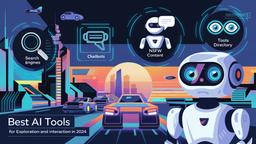Open-source humanoid robots Features
Open-source humanoid robots are fully-featured, 3D-printable robotic platforms that anyone can build and customize for research, education, or personal projects.
View MoreKey Features of Open-source humanoid robots
Open-source humanoid robots are fully-featured bipedal robots that can be built by individuals using 3D printing and off-the-shelf components. They are designed to be affordable, customizable, and accessible to researchers, hobbyists, and educators. These robots, like K-Scale Labs' Stompy, typically stand around 4 feet tall, feature articulated limbs and grippers, and can be programmed for a variety of tasks using open-source software.
3D Printable Design: Robot parts are designed to fit on standard 3D printer beds, allowing for easy and affordable manufacturing.
Low Cost: Total bill of materials costs less than $10,000, making it accessible for individuals and small organizations.
Open-Source Software: Robots use open-source software platforms, enabling customization and community-driven development.
Modular Construction: Components can be easily replaced or upgraded, allowing for flexibility in design and functionality.
Advanced Manipulation: Equipped with articulated limbs and grippers capable of performing complex tasks.
Use Cases of Open-source humanoid robots
Research and Education: Universities and laboratories can use these robots for robotics research and STEM education.
Household Assistance: Customized robots could be programmed to help with various household chores and tasks.
Industrial Prototyping: Companies can use these robots to prototype and test humanoid robot applications in industrial settings.
Healthcare and Eldercare: Adapted versions could assist in patient care or provide companionship for the elderly.
Entertainment and Hospitality: Programmable humanoid robots could serve as interactive guides or performers in various venues.
Pros
Accessibility and affordability for a wide range of users
Customizability and flexibility in design and application
Community-driven development and knowledge sharing
Cons
May require technical expertise to assemble and program
Performance may not match high-end commercial humanoid robots
Potential safety concerns with DIY construction for advanced applications
Popular Articles

Best AI Tools for Exploration and Interaction in 2024: Search Engines, Chatbots, NSFW Content, and Comprehensive Directories
Dec 11, 2024

12 Days of OpenAI Content Update 2024
Dec 11, 2024

Top 8 AI Tools Directory in December 2024
Dec 11, 2024

Elon Musk's X Introduces Grok Aurora: A New AI Image Generator
Dec 10, 2024
View More







